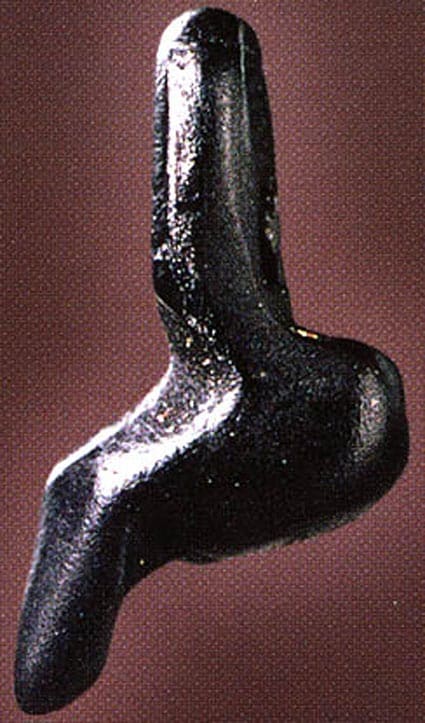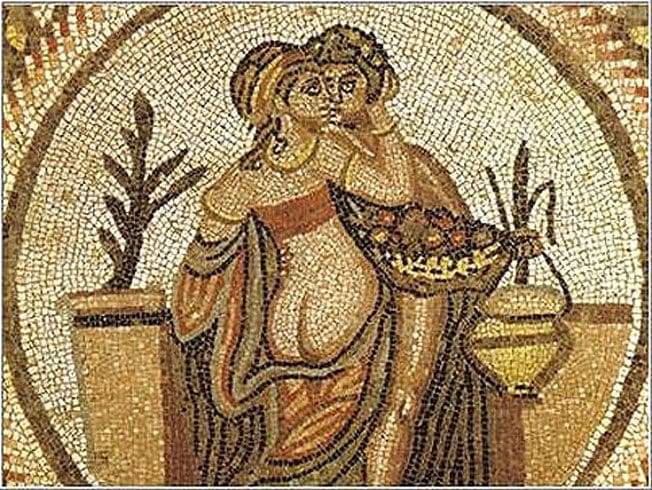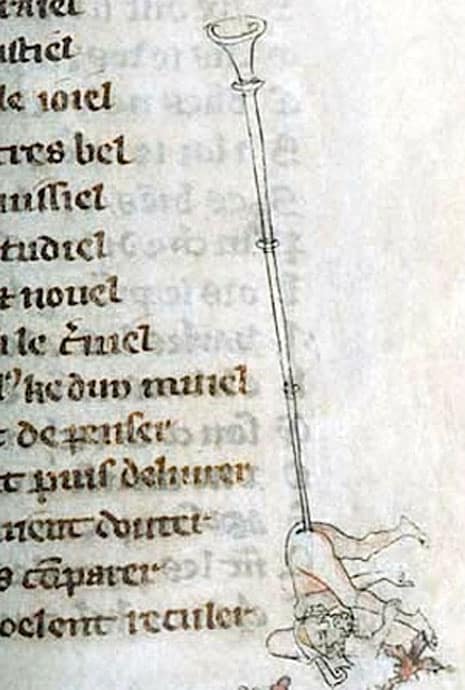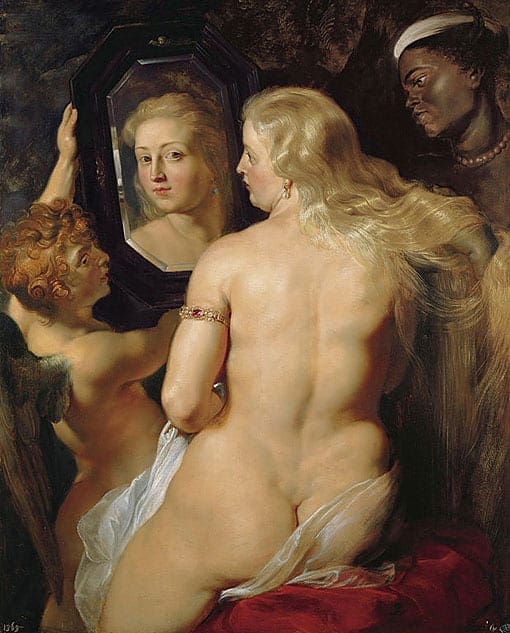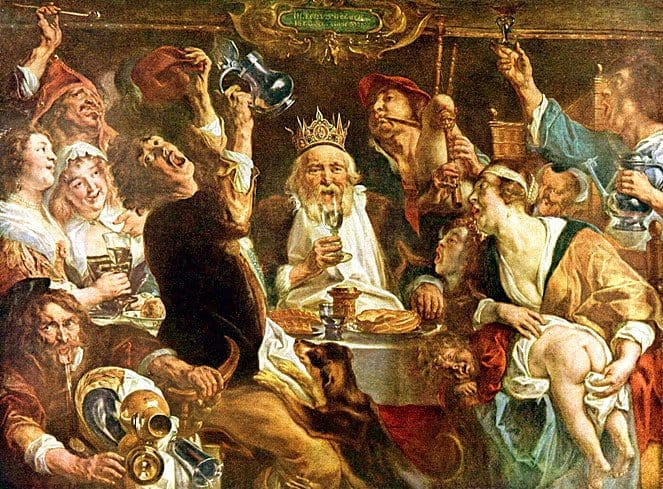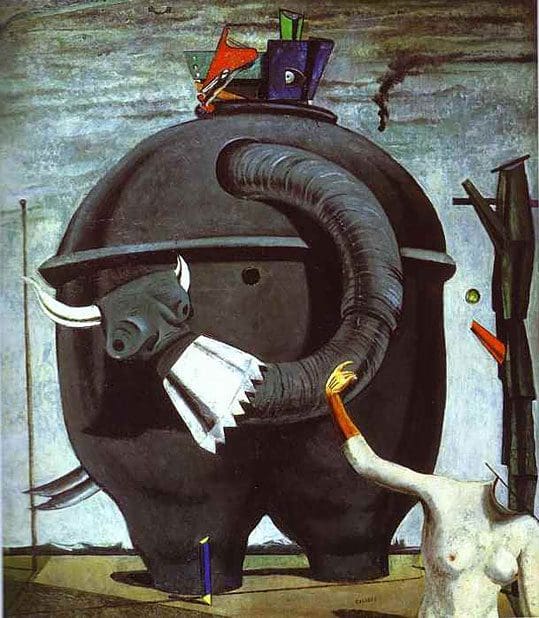Buttocks Out – When bottoms in art have taken centre stage – words Frederick Harris
For those who like bottoms in art, and I make a somewhat rash assumption that this category includes every sensible and well-adjusted individual, this Monday just gone was a day of supreme excitement.
The shortlist for the Turner Prize was announced to the nation, and we learnt that it was to include an artwork by Andrea Hamilton known as ‘Project for a door’: a sculpture, sixteen feet in height, of a man’s bare bottom. Hurrah!
It may not be exactly to everyone’s taste. The man’s two hands are gently splaying either buttock, in the familiar posture of peurile effrontery known to every schoolchild as a ‘moonie’. In the history of arse-depiction, it is an unusual angle. It is somewhat ribald. It is perhaps a little glib. It is in fact difficult to regard its inclusion on the shortlist as anything other than a direct attempt by the judges to provoke, to goad all those stuffy broadsheet commentators into paroxysms of execration.
The last few years of the prize have proved rather facile, tedious affairs, largely ignored by the public and press alike. If they were hoping to rouse a little furore this year, however, Ms Hamilton and the judges may, at the moment, be feeling a little disappointed. We have yet to hear the mildest denouncement of her work. This year’s shortlist has been greeted for the most part with hesitant praise, a few bemused articles, and some astonishingly bad puns. We need not repeat them here.
But let us return to the arse in question. Howsoever grotesquely treated, we must be glad of the return of the bottom to art. Long has it been neglected as a fit subject for depiction. In many ways it is an ideal subject for the brush and chisel. What could be more easily delineated? A few simple strokes…and voila! What could be more universally appealing? The arse may be humorous, pathetic, heroic, beautiful, titivating or ugly. But it can never be dull. I must say, however, that to the real connoisseur of moonies, Ms Hamilton’s arse may disappoint. It is half-hearted. The man may be mooning, but the main fact of the gesture has been tastefully, if artlessly, omitted. The gluteal cleft has been sealed shut. We may see no further. She has the desire, but not the guts, to affront. Perhaps her natural prudishness in the end caught up with her. It is like the schoolboy who wrote the side of the bike-shed: ‘The headmaster is a cunning so-and-so’.
It may, therefore, be refreshing, and instructive, to remind ourselves of the way in which arses have been treated in art through the ages. Let me present to you a few select examples. It is necessarily a brief, and incomplete, conspectus:
Let us begin in prehistory
This charming trinket, which might at first glance resemble some New Age trifle, is a pendant known as the Venus of Monruz. It was discovered in Switzerland in 1991, dates from roughly 11,000 years ago, and was produced by the then widespread Magdelian culture. Eleven thousand years ago…a mere day ago, relative the countless millenia in which our rude forebears were producing what may without question be regarded as art! For our purposes however, it well typifies the general goal of all prehistoric art, being the attempt at producing a direct, sensible effect by means of sympathetic magic.
Carved exquisitely in jet, and with a hole for a necklace, the bearer of this pendant would have been well assured of her fecundity. It is perhaps the most stylized realisation of fertility conceivable. It is almost entirely arse. All other aspects of the anatomy have been subsumed to the task of accentuating the bottom. Compared with other fertility symbols, compared with other European Venus Figurines, in which the breasts and stomach comprise the overbearing feature, this makes the Venus of Monruz an anomaly. And well may we be grateful to those Magdalenians for their innovation!
The arse of Pizza Armerina
This gem features among the many splendid mosaics which make up the pavement of the Villa Romana del Casale in Sicily. It is the Emperor Maximian, no less, who is speculated to have inhabited the villa and commissioned these magnificent pavements. Among them may be found depictions of Roman aristocratic and rustic life that will delight at once the eye and heart: scenes of hunting, feasting, love-making, exercising, and of gladiatorial contest. The arse in question may be found in the master bedroom, and represents a leap in conception from our stone age Venus. This arse is purely pornographic, designed to arouse; it is an aid, and not a means, to fertility.
Consulting Professor Magnani’s monograph on the mosaics, we uncover a surprising conclusion: “The man is surely unprepared for her advances. He is encumbered; she has backed him onto a low wall. With his basket of apples and his flask has he not come afresh from the orchard and the wine press – is he not, in fact, a mere servant? Yet the fine drapery of the woman mark her high status. This should not surprise us. Maximian was the son of a humble shopkeeper and attained the highest rank in the Empire. Plainly he found this little reminder of his powers of attraction, despite his lowly background, to be conducive of virility in his connubial chamber.’
I think Professor Magnani has stretches himself there. We may note that the gluteal cleft is far superior here to that on our Turner Prize entry
In this example we leap ahead by a millenium
The Dark Ages were dark in many aspects, and none more so than for the buttocks, which during these years were all but forgotten in pictorial art. We may ascribe this to the altogether deplorable detestation of the human form by early Christianity. When they emerge from cover it is for wholly humorous purposes. Sensuousness must wait a few centuries more. Most bottoms from the medieval period must be sought for in the marginalia of illuminated manuscripts, where they abound in profusion, and where the ribald note predominates. It was in the margins of these manuscripts that the bored copyists found relief from their stultifying work. Our example comes from 14th century Northern France, and accompanies a romantic poem by Jacques de Longuyon. What immediately strikes one in this picture is the way in which the trumpeter has managed to balance, with no visible means of support, what is clearly a large and cumbersome instrument on so small a base; note also the lack of valves. To produce a successful melody the practitioner must have had considerable anal dexterity. We should not doubt that such practitioners existed. Whatever it may be, our conception of the medieval troubadour is too narrow. I have read of English troubadours who proclaimed their ability to win a lady’s hearth with the aid only of a bagpipe. Anything is possible. With regards to the arse itself, it is a crude and hasty depiction.
The arse of the Renaissance is too large and too interesting a topic even to touch on in a conspectus such as this. Suffice it to say that the exultation of the human form at the time saw a great accession of bottoms to art. Sturdy, masculine arses abound. Let those who are interested consult Dr. Braunslossling’s vast tract on the subject, ‘Arschenstudien der Frühen Neuzeit’. I will leave it alone, and instead move straight to perhaps the greatest proponent of bottom art in history. Rubens was above all a painter of great versatility and vitality, but I believe it true to say that he nowhere approached perfection than in the depiction of the arse. Our example belongs to Venus herself, contemplating herself, and the viewer, in the mirror, in a painting of 1615. We have come to the Baroque arse. The etymology of baroque, according to the OED, originally derives form the French for ‘a pearl of irregular shape’. An apt description of Venus’ arse! An irregular pearl…or, more precisely, a tottering blancmange, quivering and rumpling under its own mass. Later, this sort of bottom, under a French influence, became a powdered, pastel, rubicund confection, and wholly unbelievable.
Jordaen was Ruben’s near contemporary and countryman, but how differently does Jordaen’s arse strike us! The southern, classical manner has been retained, but we have returned in subject matter and in tenor to the north – to the ribald. It is Epiphany; Grandpa has been elected King for the night; he sits chuckling to himself, not quite following the course of conversation; an unaccountable quantity of roast pork, pancakes, waffles, wheatbeer and wine has been consumed; boisterousness threatens to become brutality; and little Jacob, having consumed a surfeit of sweet wine, has had a little accident. A true infant. Never was one of those sickly southern putti seen to behave in so commendable a manner. It is a painting which speaks down the ages.
The final arse we have to consider belongs to the last century and to our own age. Here, after the advances of science in the 19th Century, we have the arse considered in its purely mechanistic aspect, as a machine. A sinister creature, half pressure vessel, half elephant, its message is clear: pride in our bottoms is folly; even the lowly beasts share in our privilege. Besides, what is an arse save as a means of waste disposal! Ernst has not shied from the central fact. The anus is the very focus of the composition. It is an arse reduced to its essential qualities, but it is not an arse we should welcome into bed.
Buttocks Out – When bottoms in art have taken centre stage – words Frederick Harris


